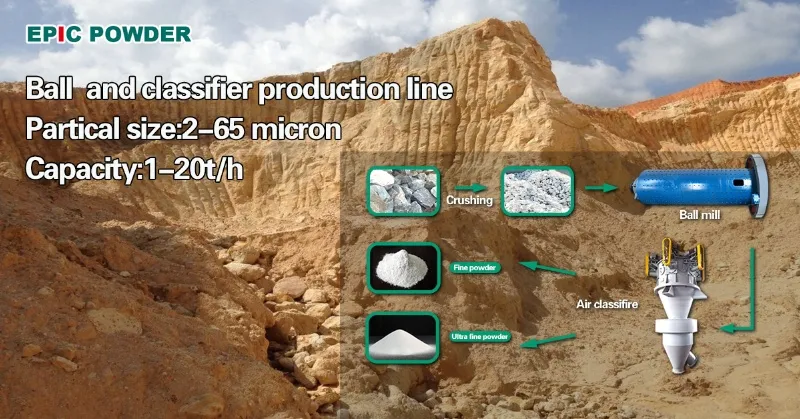Ground calcium carbonate (GCC) is produced from natural raw materials. These include dolomite, marble, and limestone. It goes through processes like crushing, grinding, and classification. As an important industrial filler, the ground calcium carbonate production is divided into dry and wet processes based on product fineness requirements and downstream applications. The dry process is suitable for medium to low fineness products. For example, d97 ≥ 3-5μm. It features a simple process and low cost. The wet process is used for ultra-fine products. For example, 2500-6000 mesh. It offers finer and more uniform particle size distribution. But its process is more complex and requires higher investment.
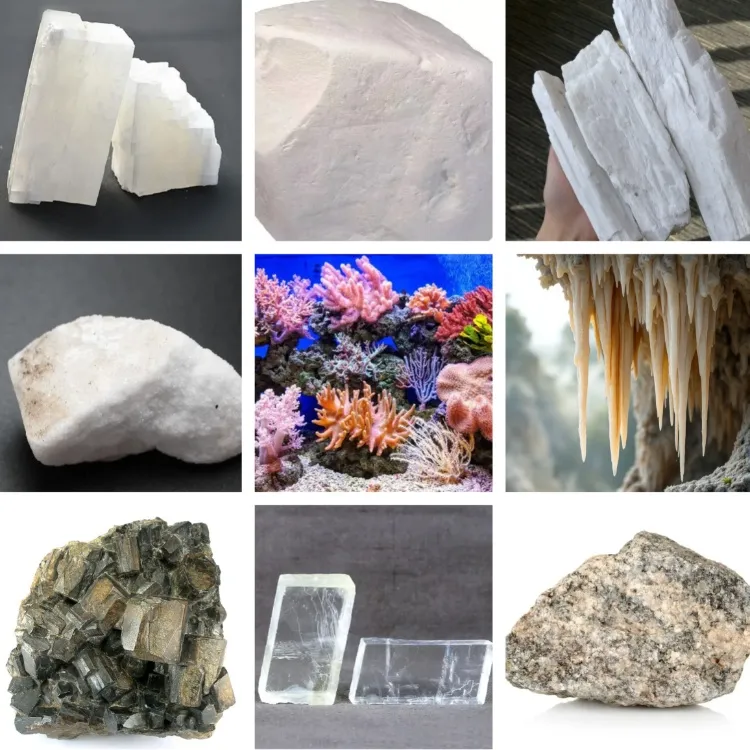
Ground Calcium Carbonate Dry Production Process and Equipment
Process Flow
- Raw Material Pretreatment: Hand-picking to remove impurities, coarse crushing (jaw crusher, impact crusher).
- Dry Grinding: Raymond mills (80-400 mesh), vertical mills, ultra-fine vertical mills (200-2500 mesh), ball mills + classifiers (multi-stage classification).
- Classification and Packaging: Ultra-fine classifiers (air-swept or cyclone-type) separate qualified products, while unqualified materials return for regrinding.
- Surface Modification (Optional): Enhances product dispersibility.
Core Equipment and Technical Features
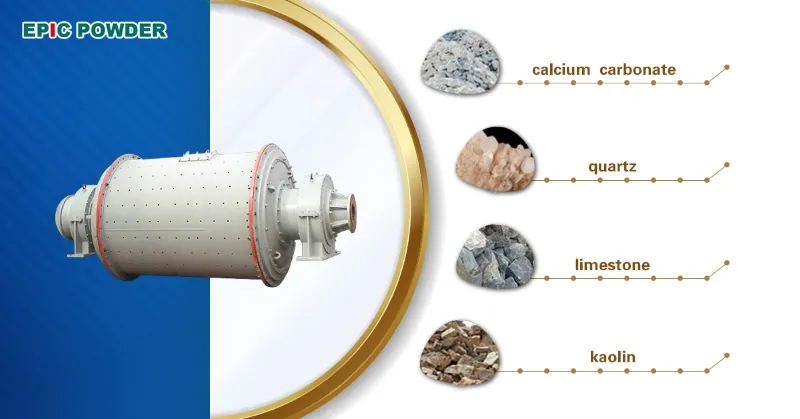
Raymond Mill: Suitable for 80-400 mesh products, occupies less space, high screening rate, but low fine powder content.
Vertical Mill: When combined with classifiers, it can produce particles smaller than 10μm with low energy consumption, suitable for medium to high-grade fillers.
Ball Mill + Classifier: Offers flexible particle size control (d97=5-45μm), but has issues with agglomeration and high energy consumption.
Jet Mill: Used for ultra-fine grinding (<10μm), high energy consumption but uniform particle size.
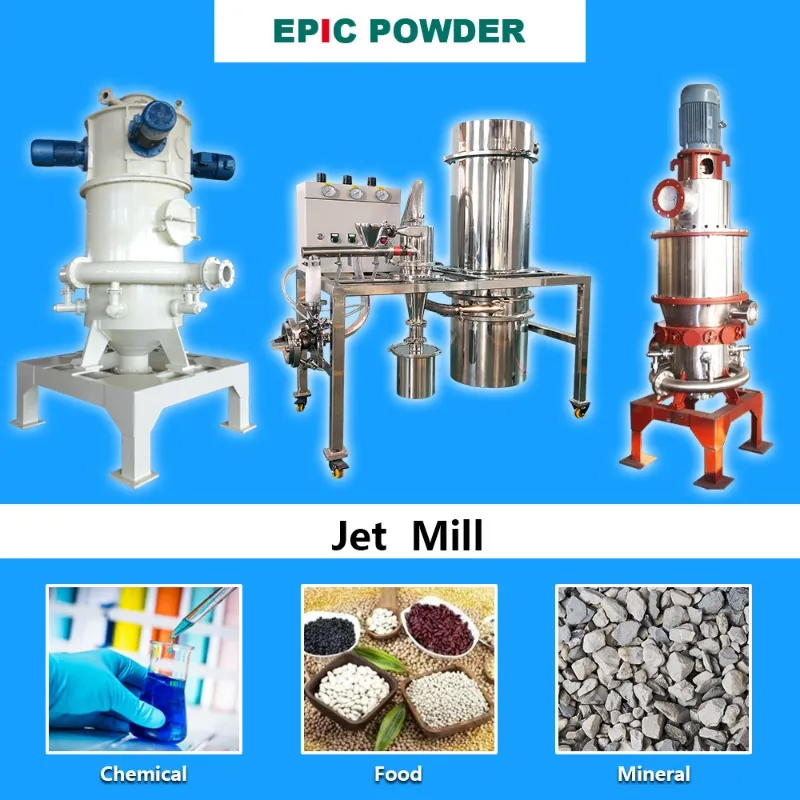
Wet Process Production and Equipment
Process Flow
Raw Material Crushing: Jaw crusher + Raymond mill (pre-crush to 200-400 mesh).
Wet Grinding: Stirred mills/ball mills (single or multi-stage).
Classification and Dehydration: Wet classifiers (hydrocyclones, disc classifiers) separate qualified slurries, followed by concentration, filtration, and drying.
Surface Modification: Wet or dry post-treatment for modification.
Packaging: Slurry or dry powder packaging.
Core Equipment and Technical Features
Wet Stirred Mill: Efficient ultra-fine grinding, suitable for filler and coating-grade products.
Bead Mill: Optimizes media distribution, reduces wear, and improves grinding efficiency.
Classification Equipment: Small diameter hydrocyclones, horizontal screw classifiers, but wet ultra-fine classification is challenging and requires optimized operation.
Drying Equipment: Drum or disc dryers, with measures to prevent agglomeration, and disaggregation treatment if necessary.
Advantages and Disadvantages
Advantages: Fine product particle size (can reach nano-level), narrow distribution, good surface modification, suitable for high-end applications (e.g., paper coating).
Disadvantages: Complex process, requires dehydration and drying equipment, higher energy consumption and operational difficulty.
Process Selection and Trends
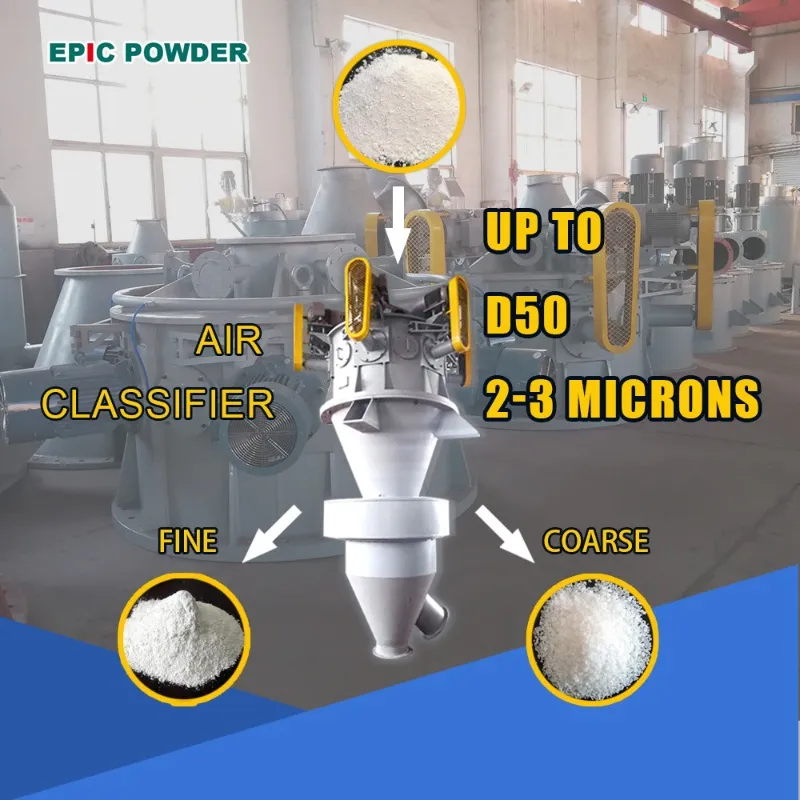
Process Selection Criteria
- Product Fineness: Dry process for products under 2500 mesh, wet process for products above 2500 mesh.
- Application Scenarios: Dry process for coarse fillers in rubber, plastics, etc.; wet process for paper, coatings, and coating-grade applications.
- Cost and Efficiency: Dry process has low investment and quick returns; wet process offers high product added value, suitable for large-scale production.
Technological Development Trends
- Large-Scale and Intelligent Automation: Equipment is moving towards high-efficiency, low-energy, automated solutions.
- Integrated Wet Modification: Grinding and modification-linked processes to improve production efficiency.
- Nano-Scale Product Development: Use of grinding aids to produce sub-micron/nano calcium carbonate for high-end material applications.
- Environmental Protection and Energy Conservation: Optimizing drying processes and reducing dust emissions.
Epic Powder
Epic Powder specializes in advanced powder processing equipment, offering complete solutions for both dry and wet ground calcium carbonate production. With expertise in air classification, precision grinding, and surface modification technologies, Epic Powder ensures stable, high-quality output across a wide range of fineness requirements. Whether for coarse fillers or ultra-fine, high-end applications, Epic Powder’s equipment delivers efficiency, consistency, and flexibility to help customers achieve optimal production performance and meet evolving industry demands.
